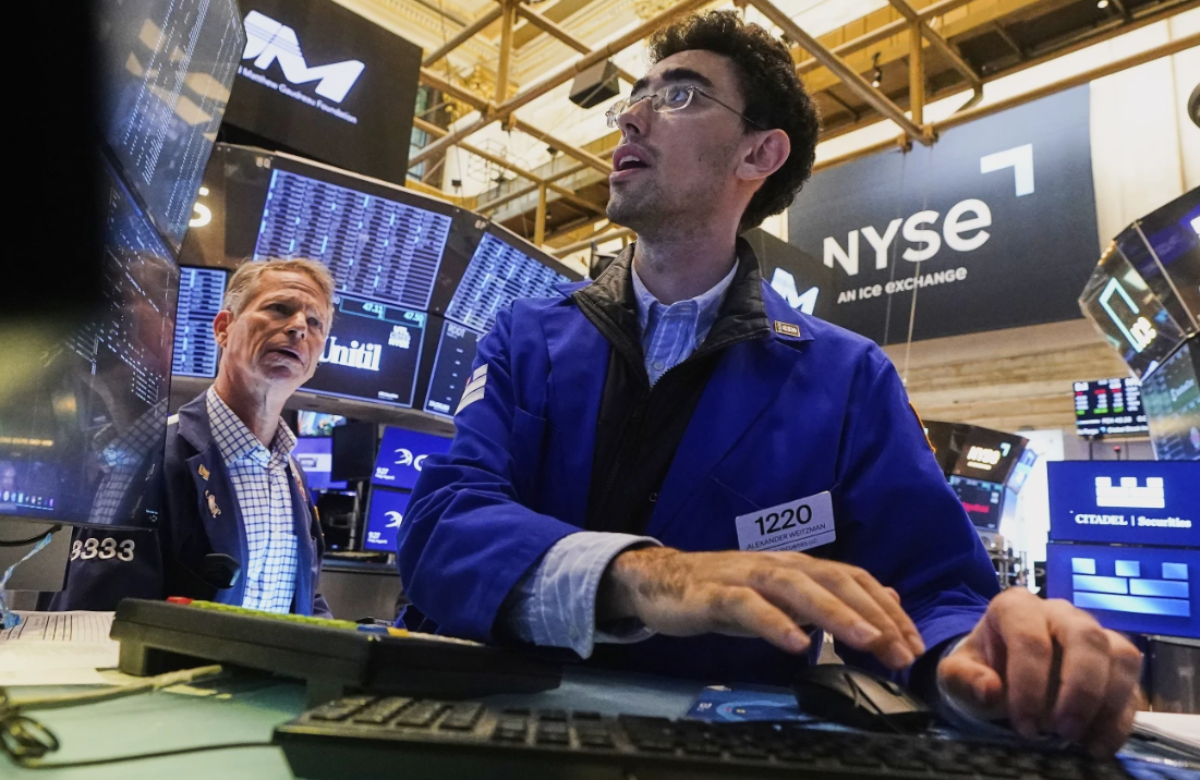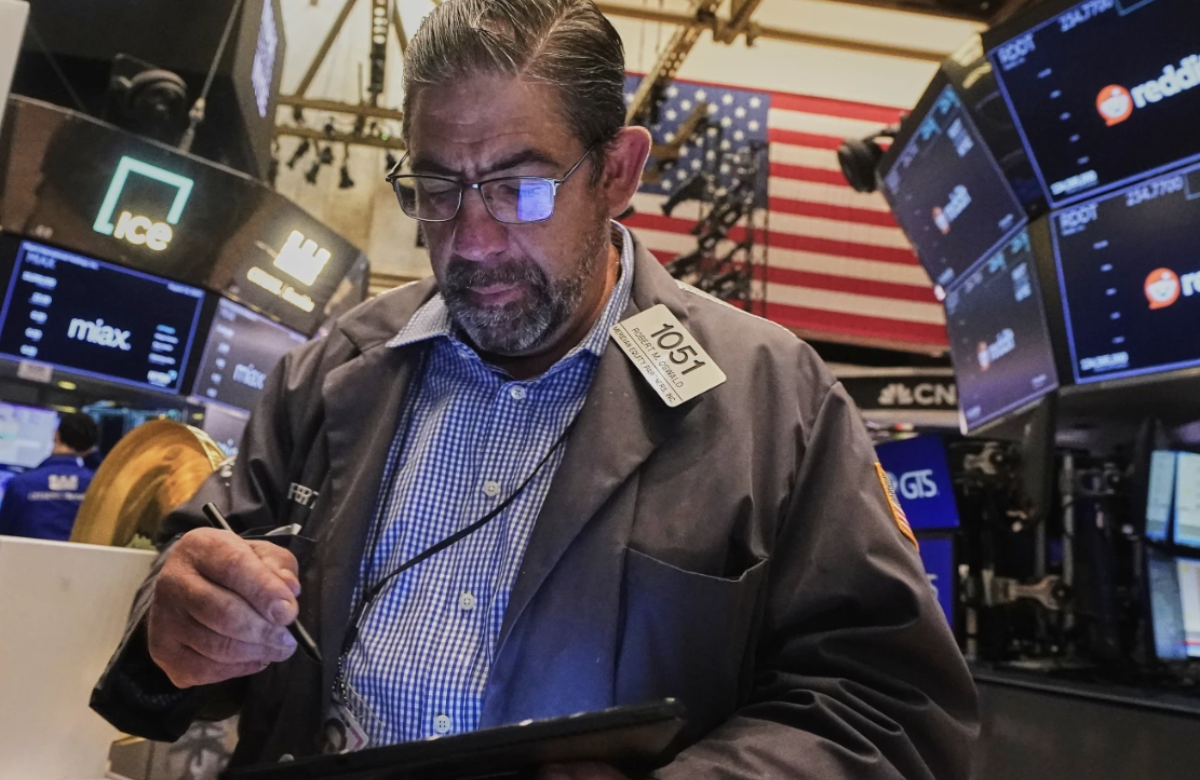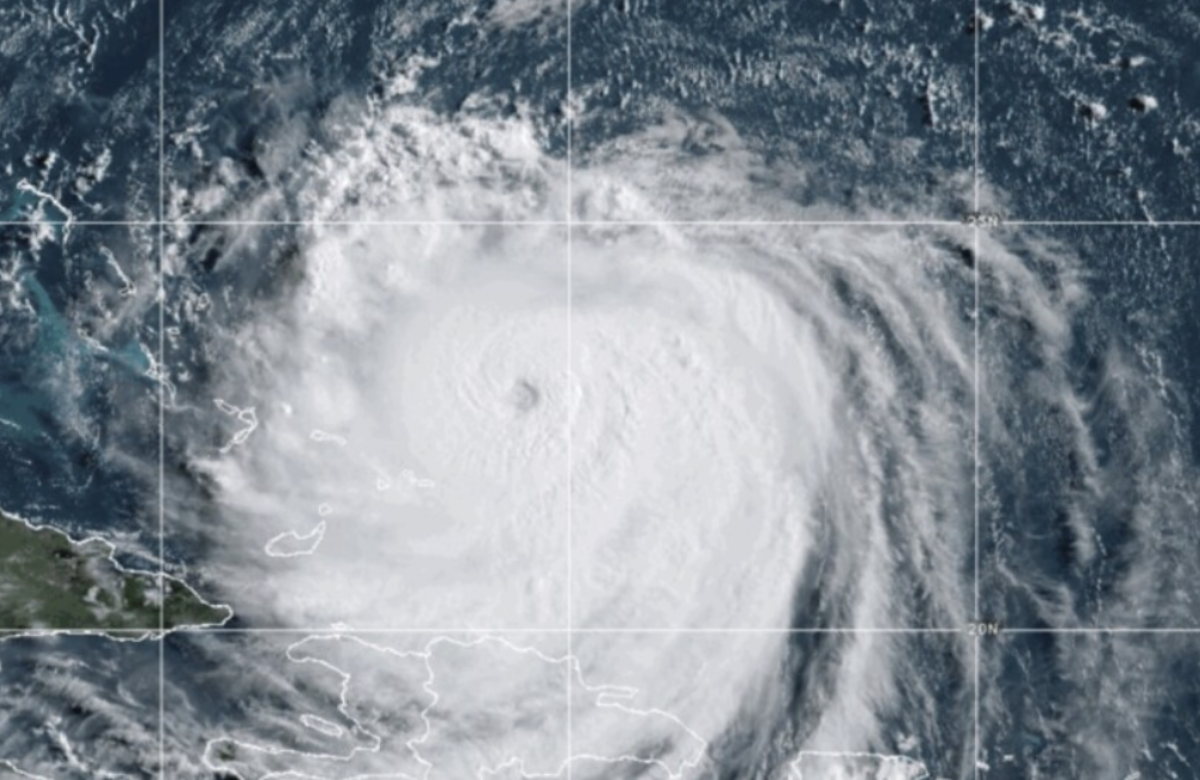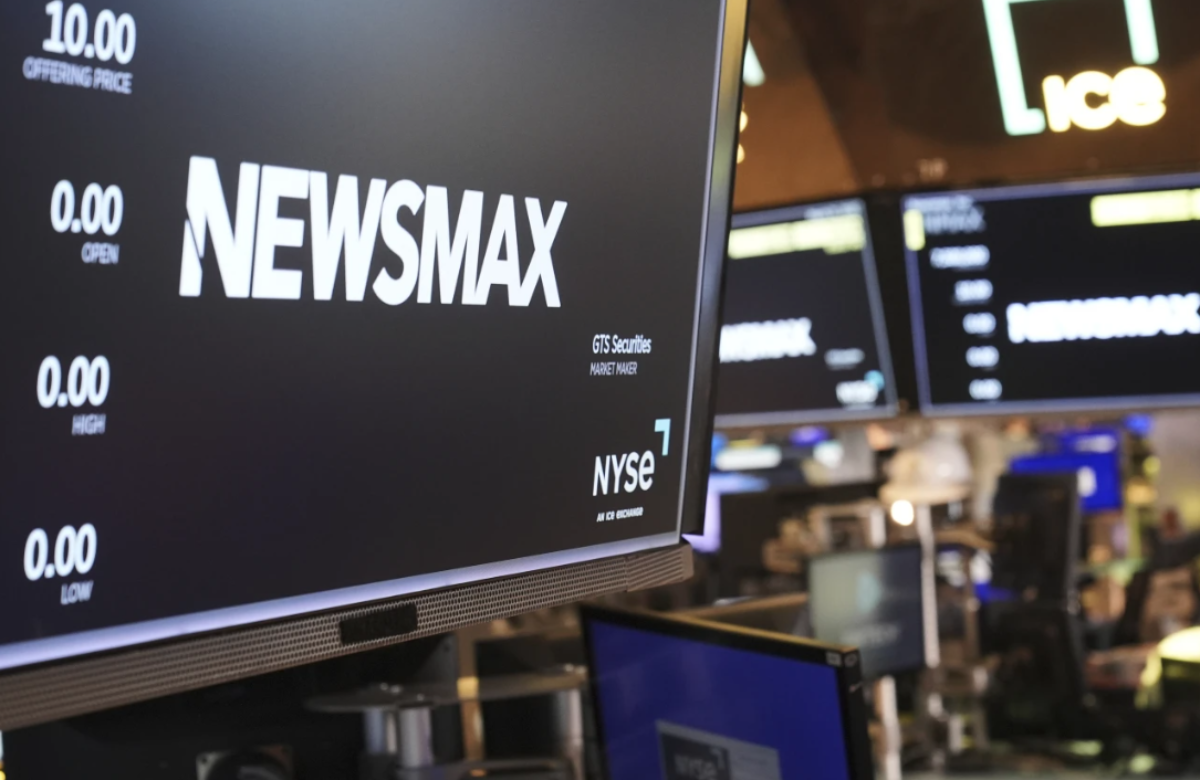Asian markets surged on Monday as trade tensions eased slightly following remarks by U.S. President Donald Trump. He stated that electronics such as laptops, smartphones, and computer chips would not face the same steep tariffs imposed on other imports, bringing some relief to global investors.
This shift in rhetoric also lifted U.S. futures, adding to Friday’s Wall Street rally. However, a weakening dollar and falling oil prices reflected lingering concerns about the overall direction of U.S.-China trade relations.
In Europe, markets opened higher. Germany’s DAX rose 1.9% to 20,752.94, France’s CAC 40 increased 1.8% to 7,235.36, and London’s FTSE 100 climbed 1.6% to 8,091.14. Futures for the S&P 500 advanced 1.1%, while those for the Dow Jones Industrial Average gained 0.6%.
Asia followed suit with robust gains. Japan’s Nikkei 225 rose 1.2% to 33,982.36, and South Korea’s Kospi added 1% to 2,455.89. Technology stocks led the charge—Tokyo Electron gained 1.4%, Advantest soared 4.9%, and Samsung Electronics rose 1.8%.
In Hong Kong, the Hang Seng index jumped 2.3% to 21,397.20, while China’s Shanghai Composite increased 0.8% to 3,262.81, boosted by data showing Chinese exports surged 12.4% in March compared to a year earlier.
President Trump temporarily excluded certain electronic goods from his tariffs after China announced a sharp increase in its own tariffs—raising them to 125% on U.S. products in retaliation. China’s Ministry of Commerce called Trump’s exemption “a small step” and encouraged him to cancel all tariffs entirely.
Despite this temporary relief, experts warn that rising tensions between the two largest global economies could still trigger significant economic fallout and potentially a global recession. Even with a recent 90-day tariff pause for several countries (excluding China), fears of escalation remain high.
Australia’s S&P/ASX 200 index climbed 1.3% to close at 7,748.60. Taiwan’s Taiex dipped slightly by 0.1%, reflecting unease as Trump indicated that new chip tariffs would be announced within the week—worrying for Taiwan’s export-reliant tech sector.
On Wall Street, Friday ended with solid gains: the S&P 500 rose 1.8%, the Dow Jones Industrial Average gained 1.6%, and the Nasdaq Composite jumped 2.1%. The rally followed stronger-than-expected earnings reports from major banks like JPMorgan Chase, Morgan Stanley, and Wells Fargo.
JPMorgan shares rose 4%, Morgan Stanley increased 1.4%, while Wells Fargo slipped 1%. The earnings gave a boost to investor confidence, even as bond markets remained volatile.
Bond yields, which signal investor sentiment, have seen major swings. The yield on the 10-year Treasury was 4.47% early Monday, a significant shift from 4.01% just a week earlier. On Friday, yields briefly spiked to 4.58%. Such large movements suggest that investors remain concerned, potentially selling U.S. bonds due to trade uncertainty or to cover losses elsewhere.
Some analysts also speculate that investors may be losing confidence in the U.S. as a financial safe haven, given the unpredictability of tariff policy. Gold prices, often seen as a refuge in uncertain times, were trading at $3,244 an ounce.
Meanwhile, a new report on wholesale inflation came in better than expected, though analysts caution it reflects March data. There are concerns that prices could climb in the coming months if tariffs filter through the economy, potentially complicating the Federal Reserve’s response.
In energy markets, U.S. crude oil slipped by 10 cents to $61.40 per barrel, and Brent crude, the global benchmark, also fell 10 cents to $64.66.
In currency trading, the U.S. dollar weakened to 142.68 Japanese yen from 143.91 yen. The euro strengthened, rising to $1.1398 from $1.1320.














